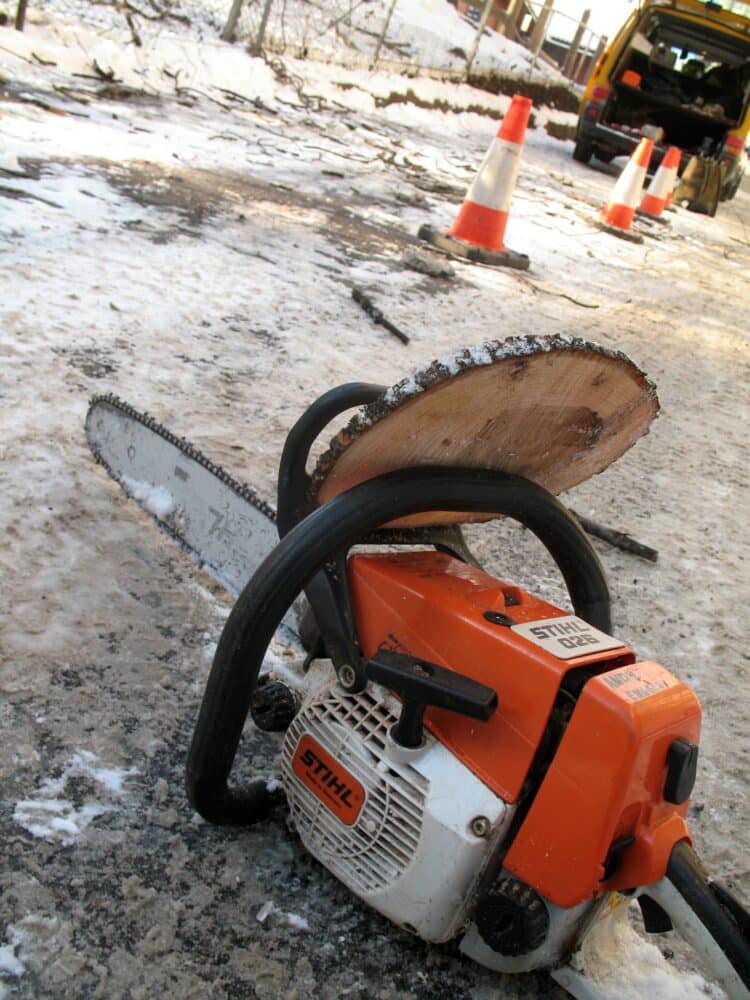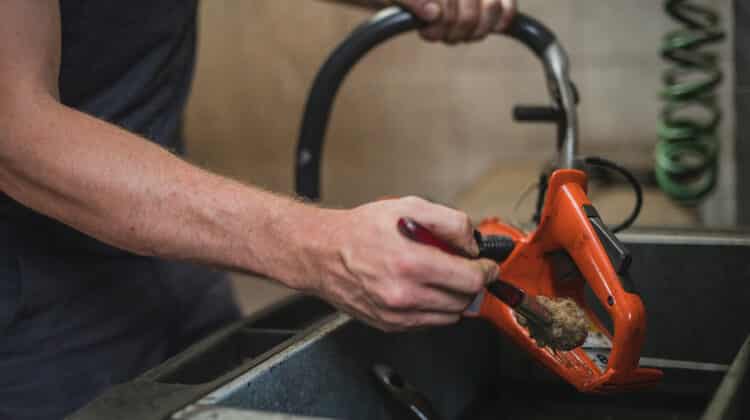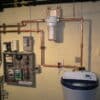
It is not uncommon for chainsaw fuel lines to clog or damage with time.
Considering that these lines transport fuel to the carburetor directly from the tank, a damaged or clogged one can prevent the fuel from flowing.
If this happens, you will need to replace the fuel lines, which takes at least 5minutes or less.
Don’t know how to replace a fuel line on a chainsaw? Don’t worry: the following steps can guide you.
But before that, let’s take a look at a list of tools you may need.
Table of Contents
Tools you will need while replacing the fuel lines
Considering that the task at hand is not very complex, then you will need some minor tools and working gear. Here you go:
• Working gloves
• Allen wrench
• Fuel container (approved)
• Pliers (needle- nose to be precise)
• A pair of scissors
• Shop rags (if you do not have these, then paper towels will suffice)
• 7/16 inch socket driver
• A wire coat hanger
How to replace a fuel line on a chainsaw
Replacing fuel lines is a straightforward task, but it can get complex if you do not have the correct tools or step-to-step guidance.
But don’t fret. Here is a step to step guide in changing the fuel line of your chainsaw.
Step 1; Empty the fuel tank #1
The first step is unscrewing the fuel tank’s cap and draining every last drop of the fuel into a storage container (approved).
While you are doing this, ensure that your workspace is well ventilated and work gloves on.
Step 2; Take out the cylinder shield and the air filter #2
You need to unscrew the screws holding the cylinder shield in place with an Allen wrench and lift it off.
You then have to disconnect the spark plug wire before removing the cover on the air filter. Now, remove the air filter.
Step 3; Take out the fuel filter #3
Wondering what use a coat hanger will be in this scenario? Wonder no more.
It would be best to have the coat hanger reach down the tank and remove the fuel filter.
For that, you will have to straighten it and feed it through the tank’s mouth like you would while fishing.
After fishing out the fuel filter, you need to cut (use the scissors) the fuel line to remove the filter.
Step 4; Remove the carburetor #4
Two nuts secure the carburetor to the engine. The socket driver can come in handy in unscrewing them.
You then have to take the air filter housing off the carburetor before pulling it off the engine block.
But it would be best if you took extra care not to destroy the gas lines or risk bending the throttle linkage. T
hat means sliding the carburetor along with the mounting studs.
Plus, if you feel you will not remember how the parts were initially connected, take as many pictures as possible as a reassembly guide.
Step 5; Take out the old and damaged fuel lines for replacement #5
You can use the pliers to pull off the fuel lines from the carburetor. Then pull the lines out of the gas tank.
If the tubes connecting the primer bulbs to the carburetor have screws, you may need to remove these first. Otherwise, you can pull them free with your hands.
Step 6; Replace the fuel lines #6
You need to cut the fuel lines at an angle to thread them into the tank.
If you have trouble threading the fuel lines, then a drop of oil can lubricate them and make the task easier.
You need to push the larger line into the tank to at least one inch. And the smaller fuel line should go all the way through the mouth of the tank.
You can use the needle-nose pliers to pull the lines out through the mouth of the tank.
Step 7; Mount the fuel filter #7
You need to cut the end square and mount the fuel filter. Ensure that the fuel filter is at the bottom of the tank by pulling the fuel line back in.
Now, trim the lines before connecting them to the carburetor.
Step 8; Remount the carburetor #8
It would be best if you now put the carburetor back into place by slipping it onto the mounting studs.
Now reinstall the air filter housing back into its place on the protruding studs. Screw the nuts back into place and tighten them.
Step 9; Remount the cover of the air filter and the cylinder shield #9
Put the air filter in its rightful place and put the cover back on. Now reconnect the spark plug wire before remounting the cylinder shield.
Once you are done, you can refill the fuel tank.
How to unblock fuel lines
Sometimes, your fuel lines may clog because of debris getting in when you change fuel or refill your tank.
It would be best if you prevented this from happening at all costs as it can cause a gummy buildup in the lines blocking it.
However, it is not uncommon for the buildup to occur besides our best efforts at preventing that.
But before replacing your fuel lines, you can try cleaning them first. Here are the necessary steps:
Step 1: you need to locate the fuel lines at the side of the carburetors.
Step 2: you will find clamps holding the ends of the fuel lines to the chainsaw. Take hold of these with your pliers and slide them down the line until they come off.
While at it, put a bucket below the fuel tank to collect petrol drips.
Step 3: here, you will need a carburetor cleaner to flush out the gummy buildup inside the fuel lines.
For that, you need to place the cleaner’s nozzle at each end of the line and spray for at least 10 seconds.
Step 4: now clamp the fuel lines into place with pliers to slide them.
Step 5: if your chainsaw is still spluttering, then the buildup was not entirely flushed out. You need to repeat the procedure.
How to clean your chainsaw’s fuel filter
A filthy fuel filter doesn’t help matters even after cleaning or replacing the fuel lines. To make the filter as clean as possible, you need first to drain it of fuel.
After fishing it out of the fuel tank, you need to dip it in a strong solvent.
A lacquer thinner is a great choice in this case as it can dissolve the buildup on the air filter.
Once all the deposits dissolve, you can remount the fuel filter in the fuel tank and fill it with fresh gas.
Conclusion
Replacing your chainsaw’s fuel lines can be a quick and straightforward process if you follow the instructions and the steps to the latter.
However, you need to ensure that you understand all the steps and the parts of the chainsaw you will be working on.
You can refer to your instructions manual to better understand if you still have trouble getting the concepts.
You should also ensure that you take the necessary safety precautions while working with your chainsaw.
For instance, do not work with the storage container full of fuel besides you. You can move to a different workstation or go outside.
Plus, it would help if you did not let the fuel drip to the ground as it can cause severe damage in a fire accident.
If you are still unsure how to go about the steps, contact professionals to give you a hand.





